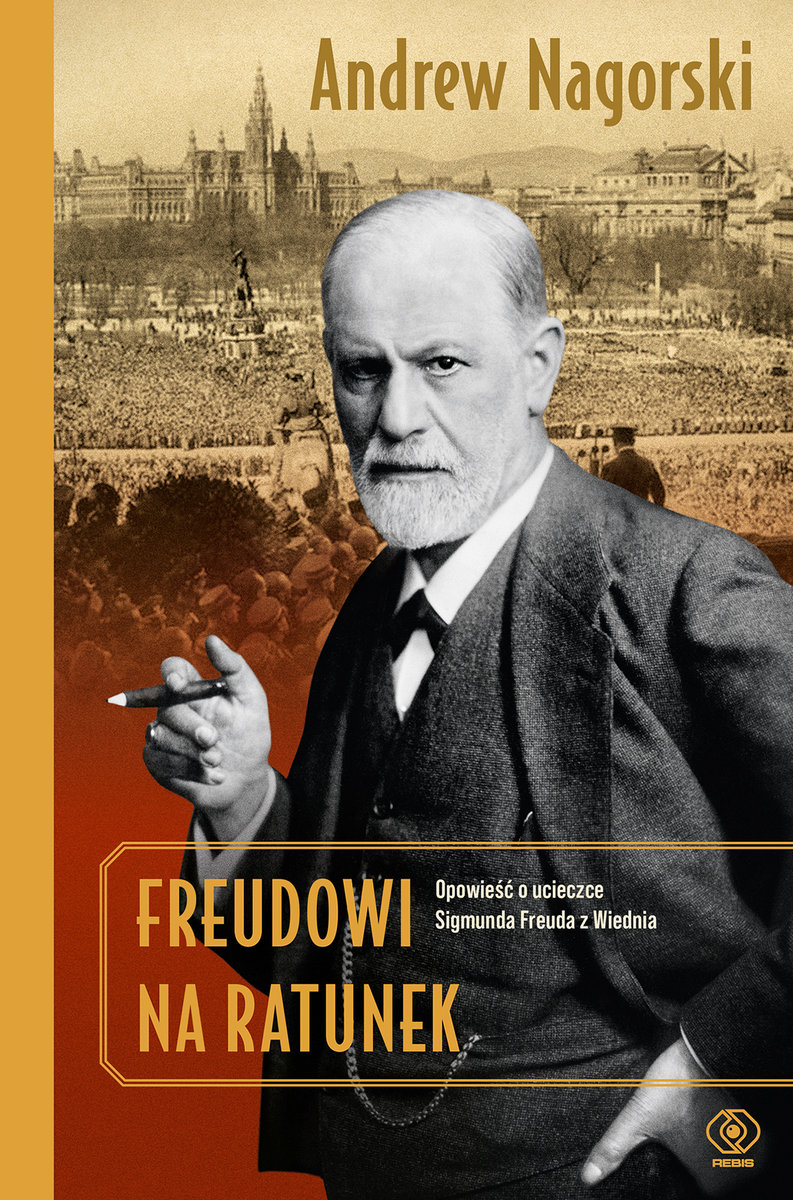Between Ritual and Performance. Humanist Marriage
śluby humanistyczne, analiza performansu
| Szczegóły | |
|---|---|
| Tytuł | Between Ritual and Performance. Humanist Marriage |
| Rozszerzenie: | |
Jesteś autorem/wydawcą tego dokumentu/książki i zauważyłeś że ktoś wgrał ją bez Twojej zgody? Nie życzysz sobie, aby pdf był dostępny w naszym serwisie? Napisz na adres [email protected] a my odpowiemy na skargę i usuniemy zabroniony dokument w ciągu 24 godzin.

Between Ritual and Performance. Humanist Marriage PDF Ebook podgląd online:
Pobierz PDF
Zobacz podgląd Between Ritual and Performance. Humanist Marriage pdf poniżej lub pobierz na swoje urządzenie za darmo bez rejestracji. Between Ritual and Performance. Humanist Marriage Ebook podgląd za darmo w formacie PDF tylko na PDF-X.PL. Niektóre ebooki są ściśle chronione prawem autorskim i rozpowszechnianie ich jest zabronione, więc w takich wypadkach zamiast podglądu możesz jedynie przeczytać informacje, detale, opinie oraz sprawdzić okładkę.
Between Ritual and Performance. Humanist Marriage Ebook transkrypt - 20 pierwszych stron:
Strona 1
polish 2(210)’20
sociological
review
ISSN 1231 – 1413
DOI:10.26412/psr210.07
AGATA REJOWSKA
Jagiellonian University
Between Ritual and Performance.
Humanist Marriage Ceremonies in Poland
Abstract: Poland is currently experiencing a growth in the number of humanist marriages: strongly individualized,
mostly secular unions. So far, the described phenomenon has been analysed mainly through the prism of many
different dimensions like secularity, class stratification or the resistance of minorities against the hegemony of
the Roman Catholic Church. It seems that the nature of humanist ceremonies has been taken for granted, and that
researchers, in their analyses, merely considered these to be rites of passage. In this paper, I ask questions not only
about the content of the ceremonies, but also about their forms. I consider these two elements as integral. I put
forward the claim that humanist marriages are a hybrid phenomenon, and thus the category of ‘social performance’
added to the category of ‘ritual’ opens up new analytical tracks and enables, to a greater extent, a more precise
identification of the innovative character of these ceremonies.
Keywords: humanist ceremonies, ritual, social performance, rite of passage, marriage ceremony, secularization.
Introduction
Humanist—strongly individualized and mostly secular—weddings are a relatively new
phenomenon in Poland (the first marriage was conducted in 2007 1) and their popularity
is on the rise. 2 According to their proponents, humanist wedding ceremonies are an alter-
native not only to religious, but also civil marriages (which, by the proponents of humanist
rites of passage, are deemed as ‘devoid of ideological content’ and ‘template,’ where actors
are subordinated to constrained, rigorous requirements).
So far researchers have studied humanist ceremonies through lenses of materiality (En-
gelke 2012), secularisation (Engelke 2014; Kasselstrand 2018; Tyrała 2009); individual-
isation (Aston 2014; Kasselstrand 2018) or class stratification (Majdecka 2018). In con-
ducted analyses, ‘the logic of design’ (Handelman 1998) of these events was rather taken
for granted. Most often, researchers mentioned merely that humanist ceremonies are rites of
1 The first documented humanist marriage ceremony in Poland was conducted by the Polish Rationalist Asso-
ciation with the assistance of the Humanist Society Scotland.
2 According to estimates of the celebrant from one of the companies that organise humanist weddings, in
2016, the total number of humanist marriage ceremonies carried out in Poland was around 140 (C7 m Pz). In
a conversation conducted in 2018, the celebrant from the same company stated that in comparison to the previous
year (2017), they conducted approximately 20 weddings more (it is a considerable increase, because this number
accounts for around one third of the total number of weddings organized by them in 2016).
Strona 2
246 AGATA REJOWSKA
passages and referred mainly to the concept of Arnold van Gennep (1960). 3 They focused
more on the content than the form, although there are approaches within ritual studies which
emphasise that both can be considered as equally important (Handelman 1998). Neglecting
the analysis of the form of these events did not allow a full understanding of the innovative
character of humanist ceremonies. Therefore, I focus on both: the content of humanist mar-
riages, but also their forms (or ‘the logic of design’). The aim of this paper is to indicate that,
regarding the analysis of such a hybrid phenomenon as humanist marriage, the category of
‘social performance’ is perhaps a better analytical tool than the category of ‘ritual,’ and it
provides a new vantage point. I refer mainly to the concept of Jeffrey Alexander (2006).
According to him ‘social performance’ is a ‘social process by which actors, individually
or in concert, display for others the meaning of their social situation’ (Alexander 2006).
I have completed this somewhat vague definition by adding Ronald Grimes’ perspective,
for whom performances, in comparison to rituals, are ‘more audience oriented, and they
are not really believed in’ (Grimes 2014). Additionally, I analyse how ‘the logic of design’
of humanist marriages affects their performativity (understood in the Austinian sense, as
transformative and causative potential).
State-of-the-Art
Until now, researchers have analysed humanist marriages and funerals through the prism
of the category of ritual. The focus has mainly been on such dimensions of analysis as
materiality, individualisation, secularisation or class stratification.
Individualisation and the highly personalized nature are the most often highlighted fea-
tures of humanist weddings (Aston 2014). Due to the individualistic character of humanist
ceremonies, they are practices most popular among the middle class (Majdecka 2018). There-
fore, ‘the creative possibilities’ seem to be a key characteristic of humanist weddings. How-
ever, this feature leads ‘to a tension between tradition and innovation’ (Aston 2014). This con-
trast between ‘the old’ and ‘the new,’ has been noted in several research projects on humanist
ceremonies (Aston 2014; Engelke 2012; Kasselstrand 2018; Majdecka 2018). Some young
Polish couples who decided on a humanist wedding expressed the conviction that religious
ceremonies are ‘non-reflective’ because they are ‘traditional’ (Majdecka 2018). Yet, human-
ist ceremonies do not function in a historical vacuum; indeed, they draw inspiration mostly
from the Christian tradition (Aston, 2014). The fact observed by Matthew Engelke (2014)—
his analysis primarily concerned the material culture of humanist funerals in London—may
explain the ambiguity regarding (especially religious) tradition. As he noted:
secular humanists often want to sever ties with the past (…), with what they understand to be Christianity’s
religious elements. At the same time, they want to preserve those aspects of Christianity they understand to be
human, not religious.
However, such a dialectical tension between repetitions and alternations could possibly
be seen in every ritual (Tambiah 1979), and newly invented rituals are often constructed
3 According to van Gennep, rites of passage are ‘the ceremonial patterns which accompany a passage from
one situation to another or from one cosmic or social world to another’ (Van Gennep [1960] 2004:10).
Strona 3
BETWEEN RITUAL AND PERFORMANCE 247
in such a way that the ‘repetitions of form or content make it tradition-like’ (Moore and
Myerhoff 1977). Thus, Grimes (2000: 214) is sceptical about the innovative potential of
such alternative weddings, perceiving them as ‘culturally constrained.’
In the Polish context, researchers have analysed humanist marriage ceremonies espe-
cially through the prism of secularisation (Tyrała 2009; Tempczyk 2012). Their appearance
is treated as a testimony to the secularisation of the ritual sphere (Tyrała 2009). Such cer-
emonies are even regarded as ‘a serious alternative to religious rituals’ in Poland (Tyrała
2009), which appears rather exaggerated.
Analysis concerning Poland has also exposed the aspect of social power. Humanist cer-
emonies are deemed as a way by which Polish non-believers can claim their rights (as a cul-
tural minority in Poland (Tyrała 2018)). Although civil marriage ceremonies can serve as
a secular alternative for non-believers, the propagators of humanist marriage regard its civil
counterpart as ‘depersonalized’ and ‘directed towards the mass audience’ (Tyrała 2009). In
line with this narrative, civil marriage ceremonies ‘lack the classical meaning of the rite of
passage’ (Tyrała 2009). It is perceived as ‘a contract’ rather than ‘a ritual’ (Tyrała 2009).
However, so far, the civil ceremony is the only legally recognised option for non-religious
couples who do not want to be married by any religious authority. Hence, because hu-
manist marriages in Poland do not have legal recognition, (contrary to other countries like
Australia, Canada, Ireland, New Zealand, Norway, Scotland, and some parts of the United
States (Kasselstrand 2018)), if couples wish to have a legally valid wedding, an additional
civil ceremony is required. Due to the fact that in the Polish context, homosexual marriages
are not legally recognised, and there is no institution of ‘registered partnerships’ neither for
heterosexual nor homosexual couples, same-sex partners are another group who, through
humanist marriages, try to overcome inequalities in Poland (the first homosexual humanist
marriage ceremony in Poland was conducted in 2008).
It seems that the nature of humanist ceremonies was taken for granted, therefore re-
searchers have simply regarded them as rites of passage, which is why I ask the questions not
only about the content of humanist ceremonies, but also about their forms. I consider these
two elements as integral. I claim that humanist marriages are a hybrid phenomenon (they com-
bine elements from various traditions, including both religious and secular themes), and thus
the category of ‘social performance’ when combined with the category of ‘ritual,’ opens up
new analytical tracks, offering ‘a new descriptive vantage point’ (Bell 2009), and enables to
a greater extent a more precise analysis of the innovative character of these ceremonies.
Between Ritual and Performance
Most classical anthropological theories emphasize that ritual is ‘stereotyped’ or ‘se-
questered’ (V. Turner 1977), ‘homeostatic’ (Goody 1986), ‘repetitive’ (Leach 1972), ‘in-
variant’ (Rappaport 1999) or ‘replicable’ (Handelman 1998). 4 The content and arrange-
ment of ritual is (to varying degrees) formalized (conventionalised), stereotypical (rigid),
condensed (fused) and redundant (repeatable) (Tambiah 1979). These features also apply
to the language of ritual (which is also more formalized). Maurice Bloch, who analysed the
4 I present the overview mainly following Alexander (2006) and Grimes (2014).
Strona 4
248 AGATA REJOWSKA
articulation of ritual, contrasted ‘everyday’ and ‘formalised’ speech acts, and listed among
others such features of the latter as: ‘partial vocabulary,’ exclusion of ‘some syntactic forms’
or ‘fixity of sequencing’ (Bloch 1989).
Numerous classic anthropological studies (Goody 1986; Evans-Pritchard 1976; Ass-
mann 2002) also indicated that the ritual ‘stands on guard’ for the current institutional order,
often protecting the status quo. Ritual is closely linked with social order, which is always
‘the source for strategies of ritualisation’ and provides ‘immediate imperatives’ (Handel-
man 1998). Ritual, as a highly formalised and structured action, can be treated as an ‘ex-
tension of social power’ (Bell 2009) or ‘the handmaid (…) of political authority’ (Tambiah
1979). However, most of the latest anthropological works emphasize that ‘performance can
work within a society precisely to undermine tradition [in order—A.R] to provide a site for
the exploration of fresh and alternative structures and patterns of behavior’ (Carlson 2017).
Theorists have also observed that ritual, as a formalised symbolic activity, involves
‘conceptions’ rather than ‘emotions’ (Langer 1951; Tambiah 1979). Because of its rigidity
and conventionality, it suspends interpersonal negotiating—one person ceases to modify
his or her behaviour in order to respond to the reactions of others (audience, observers)
(Handelman 1998). Ritual is seen as something external to the individual, and as previously
established and stipulated: ‘In adopting the ritual stance one accepts (…) that in a very im-
portant sense, one will not be the author of one’s acts’ (Humphrey, Laidlaw 1994). Ritual’s
acts and utterances are ‘not entirely encoded by the performers’ (Rappaport 1999). There-
fore, it seems to represent ‘the old’ rather than ‘the new’ and its action is ‘automatic rather
than thought out’ (Goody 1977).
On the one hand, the formal and repetitive character of ritual leads to continuity, but
on the other, formality and repetitiveness can also mean culture lag and ‘loss of meaning’
(Goody 1977) or ‘drifting out of meaning’ (Bloch 1989). The question ‘How should this
[the ritual—A.R]) be done?’ implies an attempt to reproduce previous acts performed on
this occasion as accurately as possible. When the attempt is successful, it becomes a repe-
tition of acts associated with the previous ceremony. However, as observed by Goody, ‘the
social situation may have changed, and (even in the most “static” of societies) the meaning
will certainly have done [become obsolete-A.R]’ (Goody 1977). Hence there is a need to
reform rituals, so their meanings will be relevant to the current social situation. 5 Therefore,
the category of ritual, with its emphasis on invariant and rigid structure, may not be able
to grasp these dynamics and changes. On the contrary, performance, which is less focused
on the ‘right order,’ and more on conveying the meanings of an actor’s social situation,
appears to be a more appropriate analytical category.
I would like to emphasise that I treat ‘performance’ as a ‘tool of analysis,’ rather than
‘a feature of the object’ (Bell 2009). As many theorists have highlighted, there is no clear di-
viding line between ritual and performance: ‘all performance has at its core a ritual action’
(Schechner 1987) and ‘all ritual has at its core a performative act’ (Alexander 2006). Thus,
ritual and performance exist on the same continuum and the difference between them is
‘a matter of variation, not fundamental type’ (Alexander 2006). Events ‘display degrees of
ritualization’ and different ‘genres of action’ (e.g. ritual, performance, spectacle, game) can
5 Such attitude can be also seen within Christianity. Attempts to reform the Christian liturgy suggest that some
old symbols lost their meaning and reformers try to find new symbols or revivify the old ones (Douglas 1996).
Strona 5
BETWEEN RITUAL AND PERFORMANCE 249
‘bleed into one another’ (Grimes 2014). Due to the contextuality of social actions it seems
more appropriate to use ‘relative contrastive distinctions’ rather than ‘absolute distinctions’
(Tambiah 1979). In a similar vein, there were attempts to expose the internal differentia-
tion of ritualised events, by distinguishing two types of ritual: ‘performance-centered’ and
‘liturgy-centered’ (Humphrey and Laidlaw 1994). Rituals of the first kind are quasi-the-
atrical and are more oriented towards the issue of whether the audience is convinced (or at
least appears to be convinced) than on following ‘a stipulated sequence of actions’ (Grimes
2014). Performance-centred rituals are more audience oriented, and more open to impro-
visation (in terms of structure, as well as new content), and are as a result, less formalised.
It is worth noting, however, that Humphrey and Laidlaw (and Rappaport similarly) seem to
suggest that performance-centered ritual is a ‘weaker’ or ‘less pure’ form of ritual (Grimes
2014), which still means that there is some ‘ideal type’ of ritual, characterized by the fea-
tures mentioned above (e.g. rigidity, immutability) and ‘other occasions that can be called
ritual. (…). All that other ritual is somehow something else, something not as authentic
as ritual. But, it too is representational. Therefore we treat it as ritual’ (Handelman 1998).
Taking all this into consideration, it seems that adding the category of ‘performance’ will
be beneficial for my analytical purposes. This will enable us to go beyond such discontinu-
ous binaries as ‘ritual’–‘non-ritual’ and to more effectively distinguish the specific features
of humanist marriage ceremonies.
As mentioned above, I suggest that the ‘social performance,’ which I understand fol-
lowing Jeffrey Alexander as ‘the social process by which actors, individually or in concert,
display for others the meaning of their social situation’ (Alexander 2006)—in the con-
text of humanist marriages and for my analytical purposes—is perhaps a more appropriate
analytical category. According to Alexander, performance is composed of six elements:
Systems of Collective Representations, Actors, Audience/Observers, Means of Symbolic
Production, Mise-en-scène, and Social Power. Although these elements have a high ana-
lytical and empirical utility, his definition of performance is rather vague. For this reason,
in my analysis I complete Alexander’s view with Grimes’ perspective. According to the
latter, when compared to rituals, ‘performances are more audience oriented, and not really
believed in’ (Grimes 2014). The audience-oriented character means that questions such as
‘how should this be done?’ or ‘have we got it right?,’ which imply an attempt to repro-
duce some pre-established order, are losing their importance. Therefore, the question ‘has
it worked?’ becomes more significant. The issue of whether the audience is convinced (or
at least appears so) is more crucial than whether the actors have followed the proper se-
quence of actions. The success of the performance is achieved if the audience regards it as
‘authentic’ (Alexander 2006).
The effectiveness of symbolic action is intertwined with its ‘performativity’ (‘causativ-
ity’ and the potential to transform), which I understand in the Austinian sense: saying
something (‘the illocutionary speech act’) is also doing something (however, this includes
gestures as well as words, which can also be performative). As stated by John L. Austin
(1962), performative force is used ‘not to report facts, but to influence people.’ Such acts
can be tested in terms of felicity or legitimacy, and not with rational or logical tests of truth
and falsity (Tambiah 1979). Ritualised events are performative acts, because they induce
changes in the social sphere. In this sense, classical rites of passage (including marriage
Strona 6
250 AGATA REJOWSKA
ceremonies) are ‘events-that-model’ (Handelman 1998); they are teleological and create
purposive change. The future condition does not yet exist, so ‘such an event contains fu-
tures within itself’ (Handelman 1998). ‘Events-that-model’ have a strong transformative
dimension. Their aim is to do ‘transformative work within themselves’ (Handelman 1998)
and this does not simply consist of a confirmation of changes that have happened else-
where. Such transformative work is possible because of the involvement of ‘higher-order
premises (…), that themselves are not embedded in the usual features of the phenomena
to be transformed’ (Handelman 1998; see T. Turner 1977). However, in humanist marriage
ceremonies, these ‘higher-order premises’ are mainly privatised and may affect the percep-
tion of their transformative and performative potential.
Research Methodology
The category of ritual especially captures a rigid, pre-established character of ritualised ac-
tion. Thus, using merely this one tool would not enable us to effectively grasp the distinctive
features of humanist weddings. Therefore, as previously mentioned, I completed the category
of ritual with the category of ‘social performance’ (Alexander 2006; Grimes 2014). The latter
is used as an analytical tool, to distinguish features of humanist marriages and indicate their
innovative character (in terms of structure, as well as their content). I have looked at humanist
ceremonies from two perspectives: firstly, through the prism of the features of ritual that are
most often indicated by theorists (e.g. formality, conventionality, stereotypy, rigidity or redun-
dancy). Secondly, I take into account the aforementioned features of social performances: e.g.
a subversive attitude toward tradition and the established social order, openness to improvisa-
tion, or a more audience-oriented character. The aim of the paper is to examine to what extent
the above features can be seen in the analysed ceremonies. I would also like to analyse how
these features of humanist marriages affect their performativity (understood in the Austinian
sense: saying something—‘the illocutionary speech act’—is also doing something), hence
I want to focus on the transformative potential of ceremony. Taking into consideration the
common belief that couples can do ‘whatever they want’ in a humanist wedding ceremony,
it is also worth examining whether there are any constitutive rules 6 to which the wedding
ceremony as a performative act should be subject.
The article is part of broader research on humanist marriages in Poland that I have been
conducting since 2015. The analysed data comes mainly from interviews (10) with human-
ist celebrants, the qualitative content analysis of the humanist ceremonies’ scripts (46), and
the observations from humanist marriage ceremonies (8) as well as from narrative inter-
views (15) with the main actors of marriage ceremonies (the couples).
The interviews with celebrants were semi-structured, and concerned, among other
things, their opinion of people’s motivations when opting for humanist marriages, how
humanist weddings are constructed, and the sources of participants’ inspiration (I report
only these issues which refer to marriages, although interviews also concerned funerals
and naming ceremonies).
6 They regulate ‘the activity the existence of which is logically dependent on the rules’ (Searle 1969, cited in
Tambiah 1979).
Strona 7
BETWEEN RITUAL AND PERFORMANCE 251
The interviews with couples were divided into two stages: the first part of the con-
versation was carried out jointly and concerned only the event itself, its conception and
construction, course and reception (I refer to the analytic scheme developed by Bar-
bara Myerhoff (1984)). In the second, biographical part, I intended to talk to spouses
separately, however, due to the constraints posed by the interview locations, this was
not always possible. Although a comparative study was not my aim, I referred to other
types of marriage ceremonies common in Poland, in order to highlight the peculiari-
ties of humanist ones. Due to the domination of Catholicism in Poland and the treat-
ment of Catholicism as the norm (both by Catholics and non-Catholics in Poland (
Pasieka, Sekerdej 2012: 56)), when we talked about religious counterparts, this creed was
the main reference point shared by my interviewees. Therefore, in this analysis, when I dis-
cuss more ritualized and formalised religious marriage ceremonies, I mean Catholicism
(unless otherwise stated).
Most of the interviewed couples were in their mid-thirties (however, the youngest par-
ticipant was 28, and the oldest around 60). Most of them lived either in Polish or foreign
cities: Krakow, Warsaw, Silesian Metropolis (Tychy and Zabrze), London, Vienna and Mel-
bourne. In each wedding, at least one of the spouses was a Pole. Among other nationalities
there were: American, Australian, British, Canadian and Moldovan. The majority of inter-
views took place as a face-to-face conversation, however those with couples from Vienna
and Melbourne were conducted via Skype. All my interviewees came from a middle-class
background and seemed to share a common denominator—namely, a kind of ‘creative’
profession. There were, among other jobs, graphic designers, architects, musicians, pho-
tographers, managers, programmers, as well as a bio-energotherapist, illustrator, sculptor
and a wedding coordinator.
All interviews were audio-recorded and have already been transcribed verbatim. I used
two techniques of categorisation in constructing a tool of analysis (Charmaz 2006; Guest,
MacQueen, Namey 2011). By using the first technique, I related to the pre-existing themes
and already acquired knowledge. I focused on subcategories identified by myself in the
process of conceptualisation (e.g. formality/informality or creativity/conventionality). The
second approach involves unplanned for, emerging themes grounded in data, such as ‘the
need for authenticity.’
The analysis of the collected material focused on such dimensions as:
• The structure of ceremony and its formality—is it open and flexible or predetermined
and rigid? Conventionality and typicity—is the classical structure of rite of passage
preserved? Are there borrowings from more formalised ceremonies? Rigidity and re-
dundancy—are spontaneity and emotions acceptable? Does a fixed and respected (by
couples) pattern of ceremony exist? What are the requirements toward ceremony (au-
thenticity/consistency with order)?
• The language of ceremony—what kind of speech acts (formal/everyday) are per-
formed during the ceremony? What kind of performative utterances are used in the
oaths?
• The transformative potential of ceremony—how do the structure and language of the
humanist ceremony affect its performative power? To what extent does ceremony em-
phasize the transformation from one state to another?
Strona 8
252 AGATA REJOWSKA
‘Has It Worked?’ or ‘Have We Got It Right?’
The results show that the individualised and personalized character of humanist marriages
is the feature that my interviewees emphasised most. However, in humanist ceremonies
there are still some ‘constitutive rules’ which cause a particular set of actions to be per-
ceived as a wedding. Common elements of humanist and religious ceremonies include the
structure, presence of oaths, and exchange of wedding rings as the culmination. Yet, it is
worth noting that the old forms (e.g. conventional structure of rites of passage) are topped
up with new, alternative content. Therefore, we can observe that a humanist ceremony is
structured by analogies and antipathies. The analysed events contained oaths, yet love is in-
creasingly more often declared by less binding phrases (such as ‘long-lasting as possible,’
or ‘as long as we decide to walk through life together,’ than stronger expressions such as
‘until death do us part’). The sermon is replaced by the story behind how the couple met or
by a speech about love, which one of the celebrants justified by the fact that couples usually
do not want to listen to this [sermon—A.R], they want us [celebrants—A.R] to say some-
thing about them (C7 m Pz). Moments for speeches/readings (formerly religious ones) are
preserved, but filled with new content: cultural texts, often with secular provenance (e.g.
passages from Kurt Vonnegut Cat’s Cradle or the renowned love monologue from Crave
by Sarah Kane).
Action in humanist ceremonies is less ritualised and not previously stipulated. Young
couples become the actors and the authors of their acts (unlike in most conceptions of rit-
uals). However, conveyed meanings always possess a ‘citational’ quality, and are a kind
of citation of background culture that still has a ‘structural effect’; otherwise, a perfor-
mative utterance would not succeed (Alexander and Mast 2006; Derrida 1988). The re-
quirements towards the form and content of the humanist ceremony are not very rigid; the
wedding should just be ‘authentic’ and convincing. Authenticity (sometimes contrasted
with ‘ritualisation’ and ‘formalisation’) is the motive that was most often reiterated. In-
terviewed couples confessed that they had decided on a humanist wedding because they
wanted ‘something of their own.’ At the same time, they criticised the conformism and
lack of reflexivity of people who are choosing (Catholic) church ceremonies, even if they
were not religious. According to most interviewees, such a marriage is based on a lie from
the first day (YC20 w Kr 7). In this sense, humanist marriages as performances have a sub-
versive character and critical potential (although this is rarely expressed explicitly during
the ceremony): they undermine tradition and expose the superficiality of some rituals. Ac-
cording to Alexander’s theory, the performance is effective when it is viewed as ‘authentic’
by the audience (then the question ‘has it worked?’ becomes more important than ‘have
we got it right?’ (Grimes 2014)). The filling of a ceremony with less formalized and more
personalised elements causes such an action to be perceived as emotionally involving and
hence, more convincing, even for people who were previously sceptical. As one celebrant
said, after ceremonies she conducts, even the most Catholic daddies (C9 w Wa) come up
to her to say how much they were moved by, and how proud of their children they were
7 Interviews have been coded according to the following system: C(celebrant)/YC(young couple); x(interview
number); sex(w-woman/m-man); City(BB—Bielsko Biała; Kr—Kraków; Kl—Kielce; Kt—Katowice; Pz—Po-
znań; W—Warszawa; Wr—Wrocław; Zb—Zabrze).
Strona 9
BETWEEN RITUAL AND PERFORMANCE 253
during the ceremony. The language of ceremony is one of the spheres in which the previ-
ously mentioned deformalization is visible. As one of the celebrants emphasised: We try
to speak more freely and less formally during this ceremony (C7 w Pz). Very often, ev-
eryday speech acts are used instead of formalized ones (see Bloch 1989). The code of the
message changes. It enables to a greater extent the expression of emotions: It is this ev-
eryday language that I think brings them together. They feel that they are really talking
to each other, to the person (C7 m Pz). The less formal nature of humanist marriages en-
ables the involvement of emotions and release of feelings. In ritual, it seems to be possible
to a lesser extent, as formalized behaviour creates distance, which ‘separates the private
emotions of the actors’ (Tambiah 1979). Therefore, in most cases, even if emotions are
visible, they are conventionalised—the institution of ‘professional mourners’ is an illus-
trative example. Due to the formalised and predictable structure of ritual, reactions are
automated and therefore devoid of emotions and reflection. One of the interviewed spouses
claimed:
I noticed that people at a normal wedding in church were bored. (…) they are waiting to just get it over with. (…).
A plus of a humanist wedding was that people were fascinated, because they didn’t know what would happen next
(YC21 m Wa).
The openness of a humanist ceremony to improvisation and spontaneity enables emo-
tional expression, which, as one of the interviewees argued, is not appropriate in the church
(YC21 w Wa). In order to prove the emotionality of their ceremonies, many couples men-
tioned that ‘even men were crying,’ which contradicts taken-for-granted patterns of be-
haviour.
In the conducted interviews, both celebrants and couples mentioned that any estab-
lished and required pattern of the humanist marriage ceremony does not exist. Of course,
some templates or ‘proposals’ are possible, but they are aimed at facilitating the work
of celebrants and young couples. They do not play the role of model in force. However,
despite the fact that, as one interviewee said, humanist weddings may be created from
the very beginning to the very end (YC13 w Kl), this is bricolage, rather than creation
ex nihilo. Sometimes, a humanist marriage ceremony can resemble a patchwork, made
from several scenarios proposed by celebrants. The fact that a humanist wedding does not
function in the historical vacuum additionally justifies this bricolage. As already noted
(Aston 2014; Engelke 2014), they draw inspiration from the local cultural context, and
in Poland, that would be the Christian heritage (especially given that humanist tradition
is rather poorly recognisable in Poland). Furthermore, such a tension between ‘the old’
and ‘the new’ can be seen perhaps in every ritual, as the structure of ritual is never set-
tled once and forever (Handelman 1998). However, such elements of the mosaic are ar-
ranged less rigidly than in more formalised events (which, for example, at one of the wed-
dings I observed, enabled the choir to perform Saint Paul’s Ode to Love and a theme
song from ‘The Lion King,’ one right after the other (observation Brzesko)). Moreover,
in the case of more deeply structured rituals, mistakes or changes in order often result in
people deeming the ritual to be invalid and ineffective (i.e. the marriage was not ‘done
properly’), and the question ‘have we got it right?’ becomes more crucial than ‘has it
worked?’
Strona 10
254 AGATA REJOWSKA
Ceremony and Its Performative (Causative) Power
As celebrants reported (and conducted analysis confirmed their observations), in humanist
weddings, the performative I vow is increasingly being replaced by I promise, I swear or
I will be for you (C5 m Pz, C7 m Pz), all of which are, to an extent, less symbolically
binding and therefore less powerful (in the sense of performative power). Two interviewed
couples even confessed that they had asked a celebrant not to use such expressions as ‘bride’
and ‘groom.’ As one of the spouses explained:
I didn’t want anyone saying that I was the bride, and he was the groom, I wanted to treat it a little differently. (…).
I didn’t want this, I rather wanted him to say something like ‘lovers,’ something of this kind, so that it didn’t refer
to what people usually said about weddings, about brides (YC13 w Kl).
The promise of fidelity, as well as love lasting ‘until death do us part’ is increasingly
being removed, which affects the transformative potential of ceremony. One of the cele-
brants interprets these changes as follows: Some young people are afraid of this word, they
associate it with the Church, they associate it with a more traditional approach to the whole
ceremony (C5 m Pz). In his opinion these expressions can simply be closer to life, I promise
is more appropriate than I swear; I swear is not an everyday statement (C5 m Pz).
For some interviewees, the fact that the commitment is made directly to the other
person, without the reference to a ‘higher power,’ actually does not mean that its impor-
tance is lower. However, one of the interviewees, who had both a humanist and Catholic
marriage, confessed that in the case of the religious marriage, the oath is uttered more
resolutely: everything is said quite bluntly, and there is the “so help me God, Almighty
Father” and all (YC13 w Kl). Yet, she later added: Even though we had a church wed-
ding, perhaps from my perspective, this resulted more from tradition, rather than some
kind of faith that God had joined us. The formalised words of the oath uttered in church
therefore sound more powerful, yet for some people, they are a matter of tradition and
not belief. It leads to an impression of continuity, but also to the ‘loss of meaning’
(Goody 1977).
According to the conducted interviews, young couples often doubt the transformative or
creative power of ceremony. Such an attitude could be described as ‘anti-ritualism’ (Dou-
glas 1996) and in this sense, performances are ‘not really believed in’ (Grimes 2014). As
Alexander (2006) noticed, the key aim of the performance is to display for others the mean-
ing of the actor’s social situation. Indeed, couples’ attitudes are ‘audience-oriented.’ They
want to confirm and communicate to their families and loved ones, the change that has al-
ready taken place. One of the interviewees admitted: The ceremony was more for the use
of people than for our use (YC 12 m Kr) — they wanted to make their family feel a part
of their relationship. In this sense, the ceremony has a stronger confirmative purpose than
a transformative dimension. Importantly, during many humanist weddings, this utterance
can be heard: ‘It’s not the ceremony that forms, or creates marriage A and B, but the young
couple does this on their own, through the love and support they give each other’ (observa-
tion Tomaszowice; Oblęgorek; Brzesko scenario 2;6;11;14;19;34). One of the interviewees
admitted that he had been counting the duration of their marriage not from the time of the
ceremony, but in fact much earlier:
Strona 11
BETWEEN RITUAL AND PERFORMANCE 255
Our wedding was an event in the first year of our relationship, when Joanna decided that it would be ok. There
is a big age gap between us (…). At a certain point, Joanna found that she had to think about it. And she did; we
have been counting the years of our marriage since then (YC 12 m Kr ).
Importantly, the transformative aspect and the need for ‘being recognised’ was more
strongly emphasised by the homosexual couple:
Because Agnieszka’s parents unfortunately didn’t… I mean, her family wasn’t there, because they said it wasn’t
a wedding. (…) I mean, now it’s all okay, but the wedding actually did clear up a lot of things, it made things
change. So, this wedding was an incredible event, (…) the wedding itself changed a lot in the environment, a lot.
People just didn’t expect it, that’s what I think. That it would be so complete. I think a large portion went there
taking all this lightly: it’s not just that there were two women, it was a humanist wedding. (…). I think that this
wedding was of great importance for these guests. (…) they said that it had given them a lot. So, the wedding was
really an amazing event for us, it was different than I had expected (YC11 w1 Wa).
In Poland perhaps, especially in the case of same-sex couples, communication of the
meaning of the social situation often comes to the fore:
Also, the fact that we are not straight and so on, is of great importance. (…) to put it in other words, this symbolism
was still different than in a standard, let’s say, “relationship.” (…) we did it for us, but also for such a kind of
closing of what was happening (…), to show others in a positive sense what it [their relationship—A.R] is and
what it is about. Well, that we just could not take a wedding any other way and we would not be able to, so it
would be like this one and only option (YC11 w1 Wa).
However, the presentation of ‘the meaning of a social situation,’ is important also in the
case of heterosexual couples. Due to the fact that all humanist marriages (both heterosex-
ual and homosexual ceremonies) are not legally recognised in Poland, the complementarity
of civil and humanist marriage ceremonies in Polish circumstances is inevitable (all inter-
viewed couples who had such an opportunity also had a civil ceremony in a registry office).
However, many couples highlighted that they do not deem it a ‘rite of passage,’ but rather
a mundane and emotionless visit to the office, complete with the iteration of rigid formulae,
and the signature: It’s not a declaration of love for another person, it’s repeating something
that someone tells you to, so they can give you a “piece of paper” (YC17 w Kr). This was
reiterated in each interview, except in the case of the homosexual couple. What is meaning-
ful, in all cases, is that a celebration dinner, party or reception was held after the humanist
not the civil ceremony. However, the lack of legal consequences results in humanist mar-
riages often being described as make-believe marriages (śluby na niby) (YC13 w Kl). For
the audience, the performative power of the ceremony is often tied to the legal dimension:
Many people from the family, once we had told them about the idea (…) were really happy, but there were ques-
tions: “All right, but when is there going to be some formal document?” [when is the civil wedding—A.R]
(YC17 w Kr).
We can therefore here clearly perceive the clash between the two worldviews and logics.
From the first perspective, the emphasis is put on the legal dimension: the act of marriage is
performative when it is somehow ‘formalised’ and guaranteed by some authority or recognis-
able ‘higher order premise.’ The reference to a higher instance strengthens the message, and
consequently, the lack of such references undermines the power of the words uttered. The sec-
ond, deformalized approach, represented by my interviewees, focuses on the authenticity: the
Strona 12
256 AGATA REJOWSKA
act of marriage is important, as long as there is love between the spouses. There is no external
authority who acts as the guarantor of the ceremony. As one of the interviewees said: A mar-
riage is just the beginning, not the end (YC22 w Wa), which means that it is not the culmina-
tion of their relationship, after which nothing will happen and change. On the contrary, this is
simply the next stage, therefore, for them, the promise of love to the end of life is unreasonable.
Dramatic Structure—the Tension between the Old and the New
Such lower ‘transformative potential’ of the marriage ceremony can be explained by the fact
that the ‘trajectories’ of relationships have changed, and contemporary couples now come
into being by a slower ‘step-by-step approach’ (Segalen 2008). The dramatic structure of
humanist marriage ceremonies still reflects the conventional structure of a rite of passage.
Although, as Victor Turner (who further developed the theory of van Gennep) indicated,
this tricuspid structure with a separation phase at the beginning, a liminal phase in the mid-
dle and an incorporation phase at the end, is typical not only for rituals of ‘critical moments
of life,’ but is more universal, and accompanies every change or passage (Szyjewski 2006).
However, it could be said that the framework of humanist marriage ceremonies is blurred,
which means that well-defined phases cease to be so clear. It can be treated as a symptom
of the already mentioned socio-cultural changes, regarding the perception of marriage and
family life. Contemporary marriage ‘to a lesser degree sanctifies the “transformation” from
one social state to another, from one home to the next (…)’ 8 (Segalen 2008). Nowadays,
relationships are more often formed in a process stretched over a longer period of time.
The old story of a young girl separated from her parents and immediately married to a man
does not appear and it is more often replaced by the descriptions of the everyday life of
couples who have been living together for quite a while (e.g. in the case of one interviewed
couple, their young child of preschool age took part in the ceremony). One of my inter-
viewees compared humanist marriage ceremonies with their Catholic counterparts. They
regarded the latter as something super important, a “gate” you pass through. While we,
actually, hadn’t felt any pressure with a wedding, we lived together before and not a lot has
changed (YC22 w Wa). For them, marriage was just another step in the relationship, and
not something that changes everything (YC22 w Wa), although this does not mean that the
day was unimportant. Therefore, in this case, a marriage ceremony is a confirmation of
changes that have happened previously, rather than a transformation and a change in itself.
This is because the transformation is possible when the future condition does not yet exist
(Handelman 1998).
Conclusion
Humanist wedding ceremonies are less ritualised and formalised, hence their structure is
more flexible and ‘open.’ Their individualisation means that there are no attempts to repro-
8 Segalen refers to marriage in general (however she describes mainly the French context), but in the Polish
context her statements are applicable especially to humanist marriage ceremonies.
Strona 13
BETWEEN RITUAL AND PERFORMANCE 257
duce a previously established order ‘as accurately as possible.’ In the case of the analysed
ceremonies, neither ‘the efficacious symbols,’ nor ‘the right words’ uttered in ‘the right or-
der’ are requested (Douglas 1996). Due to this openness, new meanings may be conveyed
more effectively than in a ritual wherein meanings often undergo the process of ‘ossifica-
tion’ (Bloch 1989). There is no stipulated order for a humanist marriage ceremony, however,
the whole event is organised in line with the ‘constitutive rules’ of wedding ceremonies
through which the whole event can be recognised as a wedding ceremony by the audience.
The exchange of vows and wedding rings in front of witnesses is preserved as a culmination
point in the event. Also, we observe the impact of the unspoken, cultural norm that mar-
riage is still a bond between two people. However, the character of these rules is general and
rather universal for this cultural sphere. This flexibility causes the analysed marriages to
be deemed as ‘reflective experiments.’ Therefore, action is less automated, more thought-
out and spontaneous, and enables to a greater extent the release of emotions and feelings.
However, celebrants usually present possible scenarios of the ceremony to young couples.
In this sense, humanist marriages preserve some classical features of ritual, such as repeat-
able and replicable formulae, yet, particular utterances do not have to be invariant, and even
if certain ‘pre-figurations’ exist, they do not play a role of model in force.
In the background of humanist ceremonies, a kind of paradox appears. Propagators of
humanist marriages claim that they want to create a ‘ritual alternative’ to religious rites of
passage. However, some of these initiatives could be deemed as anti-ritualistic (because rit-
ualism means the belief in high effectiveness of symbolic actions, if, of course, the symbols
are used properly and the words uttered in right order (Douglas 1996)). Typically, the main
actors in humanist marriages often doubt the ‘transformative’ power of the ceremony. Con-
ducted interviews and observations indicated an interesting tendency to diminish the role
of the ceremony to a mere ‘confirmation’ of changes that have already taken place, rather
than a performative act that genuinely transforms its participants’ status. In this sense a per-
formative force is undermined. During many humanist weddings, it has been heard that it is
not the ceremony that forms or creates the marriage. In this sense we may say that humanist
weddings as performances aim to communicate the meanings of the actors’ social situation,
and they are ‘not really believed in’—for couples, their marriage is not created directly by
the ceremony, but rather is the result of a process that began much earlier. Some of my in-
terviewees highlighted that the ceremony was more of a confirmation of their relationship
that had been established much earlier, in contrast to the creation of a completely new re-
lationship. Meaningfully, only the homosexual couple, through a humanist wedding, tried
to realise their need for ‘legitimisation.’ For them, the ceremony really marked a turning
point on the path towards their community’s acceptance of their relationship.
The reduced transformative power of the ceremony calls to mind once again Handel-
man, and his statement that transformation is possible only when the future condition does
not yet exist, and the event contains the future within itself (Handelman 1998). The trans-
formational work of the ceremony is weakened by current changes in the way couples are
commonly formed (i.e. more slowly over a longer duration) (Segalen 2008), and in an at-
titude towards marriage and its indissolubility. Due to the changes in couples’ trajectories
(e.g. cohabitation before marriage, re-marriage, having children out of wedlock, or the rise
of the average age of marriage), the dramatic structure of the wedding as a classical rite
Strona 14
258 AGATA REJOWSKA
of passage is blurred. The decreasing marital durability seems to be a more general trend,
which may also be reflected by the increasing rate of annulments of marriages within the
Catholic Church (Paprzycka, Mianowska 2020).
As my research revealed, the character of the analysed ceremonies is often auto-refer-
ential. Rites are deeply rooted in the biographies of individuals and a naturalistic, temporal
frame. Therefore, ‘higher-order premises,’ are shrunk and privatised, and the meanings to
which they refer might be unintelligible for some audiences. This feature may also un-
dermine the transformative dimension of the ceremony. The involvement of a higher-or-
der premise further facilitates a transformation (T. Turner 1977). On the contrary, couples
highlighted that it is they who are the ‘highest authority,’ even if the audience might not
recognise them as such. Although the audience very often perceive humanist wedding cer-
emonies as ‘emotional’ and ‘personal,’ the lack of legal consequences can often cause in
their eyes the ceremony to be incomplete, noncommittal, and not serious enough.
The analysis indicated two ways in which couples themselves interpret the performa-
tive power of humanist ceremonies. According to the first, God ceases to be the main agent
and guarantor of the ceremony, and due to the lack of such references, the strength of the
oath decreases. Importantly, this was the opinion of women who had both humanist and
Catholic weddings. However, for most humanist couples, the significance of the oath is
actually strengthened, precisely because it is only between them, and no external author-
ity is involved. Such tension between these two logics of interpretation can be treated as
an effect of the ‘subjective turn of modern culture’ (Taylor 1991)—the external authority
is increasingly being replaced with authority rooted in the individual. However, while the
couples I met wanted to avoid an intrusive control and regulation exercised by formalised
organisations (e.g. church, state), they still yearned for ‘some’ regulation exercised by in-
formal social control, and wanted to utter (even ‘softened’) oaths in front of witnesses.
Therefore, despite the individualisation, the humanist marriage ceremonies still preserved
a communal character.
The main actors of ceremony put strong emphasis on the ‘authenticity.’ Therefore, very
often the promises of fidelity and love ‘until death do us part’ are removed from the wedding
vows. Love is declared with performative utterances such as ‘I promise,’ ‘I swear’ or ‘I will
be for you,’ rather than ‘I vow.’ Saying something is also doing something, it constitutes
a new reality, however, ‘I will be for you’ is less obliging and explicit than ‘I will be with
you till death do us part.’ These changes cause the oath to become less symbolically binding
and therefore less powerful (in the sense of performative power). The lack of authenticity is
also the reason why humanist couples criticise people who stay in church (in Poland, pri-
marily the Roman Catholic Church) only for the sake of the rite of passage, even if it is
an ideologically foreign worldview and belief for them. Such attitudes have been labelled
‘hypocrisy’ and ‘conformism.’ In this sense, the humanist marriages in Poland may have
a subversive character, which is often attributed to performances. They have the potential to
undermine tradition, contrary to rituals, which are seen rather as ‘homeostatic,’ protecting
the status quo, and reinforcing the established social power.
An attempt to analyse not only the content but also the form of humanist marriage cere-
monies seems to be justified, firstly because ‘cultural considerations are integrally implicated
in the form that ritual takes’ (Tambiah 1979), and secondly, because researchers, especially an-
Strona 15
BETWEEN RITUAL AND PERFORMANCE 259
thropologists, inspired by performance studies, have often been criticised for paying too much
attention to enactment (or ‘performance’) rather than to the ‘logic of design’ of events (Han-
delman 1998). Focusing on the ‘logic of design’ of humanist marriages, as well as including
the category of performance, gives a new viewpoint, enabling a deeper analysis and distin-
guishing specific features of such ceremonies. The appearance of such a hybrid phenomenon
as humanist marriages might be considered as a sign of Poles’ changing attitude to love and
marriage and new expectations regarding marriage ceremonies in Poland in general.
Funding
This work was supported by the National Science Centre Poland (NCN), grant number 2018/29/N/
HS6/01862.
References
A l e x a n d e r, J. 2006. Cultural pragmatics: social performance between ritual and strategy, in: J. Alexander et al.
(eds.), Social Performance. Symbolic Action, Cultural Pragmatics, and Ritual. New York: Cambridge
University Press.
A l e x a n d e r, J., and M a s t, J.L. 2006. Introduction: symbolic action in theory and practice: the cultural prag-
matics of symbolic action, in: J. Alexander et al. (eds.), Social Performance. Symbolic Action, Cultural
Pragmatics, and Ritual. New York: Cambridge University Press.
A s s m a n n, J. 2002. The Mind of Egypt: History and Meaning in the Time of the Pharaohs. New York: Harvard
University Press.
A s t o n, K. 2014. For the one life we have: Past, Present, Future/ Beginning, Middle, End. Tenses: New Graduate
Writing.
A u s t i n, J.L. 1962. How to Do Things with Words. Oxford: Clarendon Press.
B e l l, C. 2009. Ritual Theory, Ritual Practice. New York: Oxford University Press.
B l o c h, M. 1989. Symbols, songs, dance and features of articulation: is religion an extreme form of traditional
authority?, in: M. Bloch, Ritual, History, and Power: Selected Papers in Anthropology. London: Athlone.
B o r o w i k, I. 2001. Religijność — wymiar rytualny, in: I. Borowik and T. Doktór (eds.), Pluralizm religijny
i moralny w Polsce. Kraków: Nomos.
C a r l s o n, M. 2017. Performance: A Critical Introduction. London: Routledge.
C h a r m a z, K. 2006. Constructing Grounded Theory. A Practical Guide Through Qualitative Analysis. London:
Sage.
D e m e r a t h, N.J. III. 2000. The Rise of “Cultural Religion” in European Christianity: Learning from Poland,
Northern Ireland, and Sweden, Social Compass 47 (1): 127–139.
D e r r i d a, J. 1988. Limited Inc. Evanston, IL: Northwestern University Press.
D o u g l a s, M. 1996. Natural Symbols: Explorations in Cosmology. London and New York: Routledge.
E n g e l k e, M. 2012. Not mine, not mine: On the Coffin Question in Non-religious funerals. Lecture delivered at
the Utrecht University on 18 October 2012 and Stockholm University on 1 November 2012, Available at:
aec70183 (accessed 31 June 2015).
E n g e l k e, M. 2014. Christianity and the Anthropology of Secular Humanism, Current Anthropology 55: 292–
301.
E v a n s - P r i t c h a r d, E. 1976. Witchcraft, Oracles and Magic among the Azande. London: Oxford University
Press.
G o o d y, J. 1977. Against “Ritual”: loosely structure thoughts on a loosely defined topic, in: S.F. Moore and
B.G. Myerhoff (eds.), Secular Ritual. Assen/Amsterdam: Van Gorcum.
G o o d y, J. 1986. The Logic of Writing and the Organization of Society. Cambridge: Cambridge University Press.
G r i m e s, R.L. 2000. Deeply into the Bone: Re-inventing Rites of Passage. University of California Press.
G r i m e s, R. 2014. The Craft of Ritual Studies. New York: Oxford University Press.
G u e s t, G., M a c Q u e e n, K., and N a m e y, E.E. 2012. Applied Thematic Analysis. Los Angeles: Sage.
Strona 16
260 AGATA REJOWSKA
H a n d e l m a n, D. 1998. Models and Mirrors: Towards an Anthropology of Public Events. New York: Berghahn
Books.
H u m p h r e y, C., and L a i d l a w, J. 1994. The Archetypal Actions of Ritual: A Theory of Ritual Illustrated by the
Jain Rite of Worship. Oxford: Clarendon.
K a s s e l s t r a n d, I. 2018. We still wanted that sense of occasion: traditions and meaning-making in scottish
humanist marriage ceremonies, Scottish Affairs 27 (3): 273–293.
L a n g e r, S. 1951. Philosophy in a New Key. A Study in a Symbolism of Reason, Rite and Art. New York: The
New American Library.
L e a c h, E. 1972. Ritualization in man in relation to conceptual and social development: in W.A. Lessa and
E.Z. Vogt (eds.), Reader in Comparative Religion: An Anthropological Approach. New York: Harper
& Row.
M a j d e c k a, E. 2018. “My jesteśmy małżeństwem nie tylko dlatego, że państwo nam tak mówi”—rzecz o ślubach
humanistycznych w Polsce, SOCIETAS/COMMUNITAS 1–2: 125–141.
M o o r e, S.F., and M y e r h o ff, B.G. 1977. Introduction: Secular Ritual, in: S.F. Moore and B.G. Myerhoff (eds.),
Secular Ritual. Assen/Amsterdam: Van Gorcum.
M y e r h o ff, B.G. 1984. A death in due time: construction of self and culture in ritual drama, in: J. MacAloon (ed.),
Rite, Drama, Festival, Spectacle: Rehearsals toward a Theory of Cultural Performance. Philadelphia:
Institute for the Study of Human Issues.
P a p r z y c k a, E., and M i a n o w s k a, E. 2020. Nietrwałość związków intymnych — społeczno-demograficzne
uwarunkowania powodów potencjalnej decyzji o rozstaniu kobiet i mężczyzn. Przegląd Socjologicz-
ny 69 (1): 81–105.
R a p p a p o r t, R. 1999. Ritual and Religion in the Making of Humanity. Cambridge: Cambridge University Press.
S c h e c h n e r, R. 1987. Victor Turner’s Last Adventure, in: V. Turner (ed.), The Anthropology of Performance.
New York: PAJ.
S e g a l e n, M. 2008. Rytualne innowacje dotyczące współczesnego ślubu we Francji, in: A. Chwieduk and A. Po-
mieciński (eds.), Francuska antropologia kulturowa wobec problemów współczesnego świata. Warsza-
wa: Wydawnictwo Naukowe PWN.
S z y j e w s k i, A. 2006. Człowiek w drodze do życia sakralnego; sacrum, rytuał i symbol w koncepcji Victora
Turnera, in: V. Turner, Las Symboli. Aspekty Rytuałów u Ludu Ndembu. Kraków: Nomos.
Ta m b i a h, S.J. 1979. A Performative Approach to Ritual. London: Oxford University Press.
Ta y l o r, Ch. 1991. The Ethics of Authenticity. Cambridge and London: Harvard University Press.
Te m p c z y k, K. 2012. Ceremonie humanistyczne jako alternatywa dla ich religijnych pierwowzorów, in: R.T. Pta-
szek and M. Piwowarczyk (eds.), Uniwersalizm chrześcijaństwa wobec alternatywnych propozycji współ-
czesności. Lublin: KUL.
Tu r n e r, T. 1977. Transformation, Hierarchy and Transcendence: A Refolmulation of Van Gennep’s Model of
the Structure of Rites de Passage, in: S.F. Moore and B.G. Myerhoff (eds.), Secular Ritual. Assen/Ams-
terdam: Van Gorcum.
Tu r n e r, V. 1977. Symbols in African Ritual, in: J.L. Dolgin et al. (eds.), Symbolic Anthropology: A Reader in
the Study of Symbols and Meanings. New York: Columbia University Press.
Ty r a ł a, R. 2009. Ślub humanistyczny po polsku — konteksty i konsekwencje. Available at: -
alista.pl/xpliki/tyrala.slub.humanistyczny.po.polsku.pdf, (accessed 4 July 2017).
Ty r a ł a, R. 2018. Living without God in a religious country: Polish nonbelievers as a cultural minority, Social
Compass 65 (1): 131–144.
Va n G e n n e p, A. [1960] 2004. The Rites of Passage. London: Routledge.
Biographical Note: Agata Rejowska is a Ph.D. student at the Institute of Sociology, Jagiellonian University in
Krakow. Currently she is the principal investigator for the project Humanist marriages as social performances.
The reconstruction of meanings, funded by the National Science Centre Poland. Since 2019 she also is a member
of the research group in the project Resistance and Subordination. Religious Agency of Roman Catholic Women
in Poland, led by Anna Szwed, funded by the National Science Centre Poland.
ORCID iD:
E-mail: [email protected]











